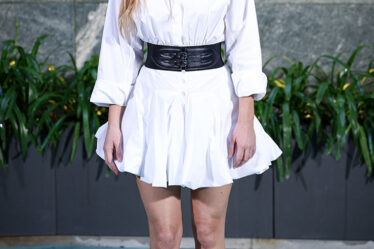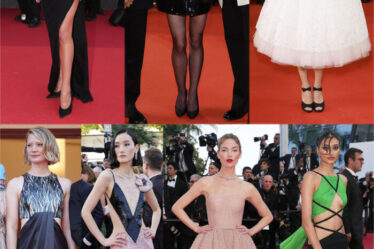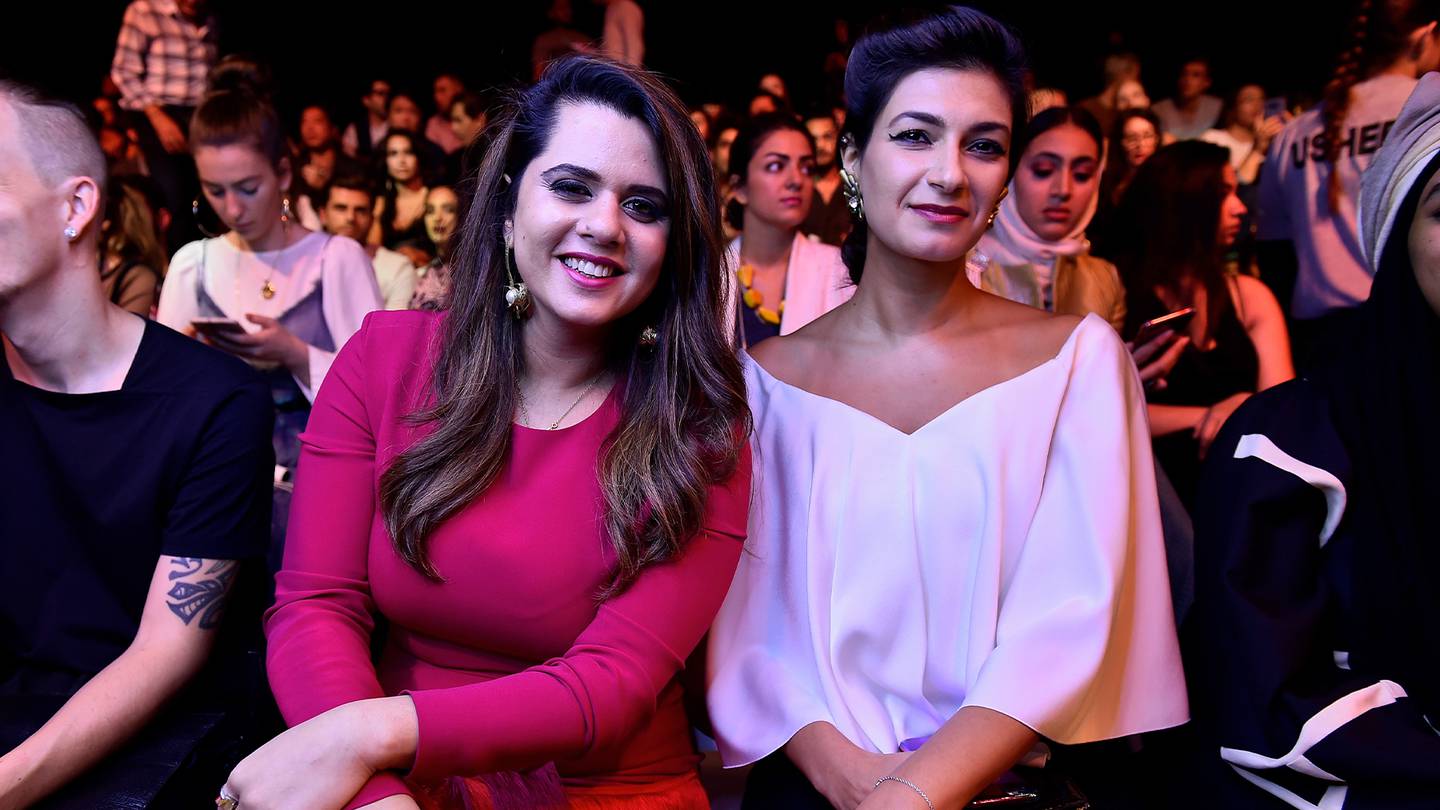
It’s often said that Dubai businesses have expats to thank for much of their success but there is one overlooked community that has powered the local fashion industry longer than most. Without South Asians like Micky Jagtiani, the city simply wouldn’t be the same.
Jagtiani once worked as a taxi driver to make ends meet; today, the retail mogul of Indian heritage is worth an estimated $2.9 billion, according to Forbes. Another member of the South Asian diaspora who made his fortune in the United Arab Emirates is Firoz Merchant, a jewellery entrepreneur whose childhood in India was interrupted after he had to drop out of elementary school because his family couldn’t afford to pay the tuition fees. Both businessmen went on to build fashion empires in Dubai in the booming 1990s.
Though such rags-to-riches stories are rare, tales of enterprising and successful South Asians can be found throughout the Emirati fashion industry. Geographical proximity and long-standing bilateral relations that can be traced back to even before the partition of India, or the establishment of the United Arab Emirates, have led to the development of a society and culture that is imbued with South Asian influences.
“When it comes to any industry, be it jewellery, retail or hospitality, there’s a significant presence of South Asians behind those businesses [in the UAE],” said Nisha Jagtiani, daughter of Micky Jagtiani and group director of Landmark Group, one of the largest retailers of homegrown brands in the GCC region (Gulf Cooperation Council countries, including not only the UAE but also Kuwait, Bahrain, Oman, Qatar, and Saudi Arabia).
Businesses Built on Migration
Born in Bahrain and raised in the UAE, Nisha Jagtiani is one of the most influential figures in Middle Eastern retail. Her father was born in Kuwait to Indian parents but founded Landmark Group in Bahrain in 1973 with the launch of childrenswear store Babyshop. In 1990, Landmark Group’s headquarters moved to the UAE.
“A lot of South Asians that I know have grown with this region. They’ve built their homes here, outside of India and Pakistan, creating concepts and businesses which cater specifically to the Middle Eastern market,” she added.
In a region better known for companies founded by Emiratis and other Arabs, such as Al Tayer, Chalhoub, and for business models focused on foreign luxury brands and imported retail concepts, Jagtiani’s Landmark Group stands out for its portfolio of labels born in the UAE and exported to other markets.
With fashion retail chains such as Centrepoint, Splash, Shoemart, Lifestyle, Max and Styli, Landmark Group continues to maintain a stronghold in the UAE’s value and mid-market segments despite increasing competition from international players. The group’s present-day operations span 2,200 stores in 21 countries across the Middle East, India and Southeast Asia.
One reason South Asians are widespread in Emirati business is their sheer numbers. The UAE is home to the world’s largest Indian expat community (though the US has a larger overall community of people of Indian heritage) as well as the world’s second-largest Pakistani expat community.
Expatriates of diverse nationalities make up the vast majority of the UAE’s 9.4 million population, among whom 68 percent are people from the South Asian diaspora, according to the United Nations’ 2020 International Migrant Stock report. Indians, Pakistanis, and Bangladeshis are the three most prevalent nationalities in the UAE while Sri Lankans and Nepalis rank in the top 20. Other nationalities, namely Egyptians and Filipinos, round out the top five alongside South Asians.
Some South Asians who eventually set up fashion companies in Dubai have deeper roots in the Middle East than others or, like the Jagtianis, they can trace their businesses back to neighbouring countries.
Tony Jashanmal’s family has been part of the regional retail industry for over a century. In 1919, his Indian grandfather established the Jashanmal store in Iraq, turning the business into a household name. Having joined the family firm in 1973, the Kuwaiti-born billionaire now oversees the group’s operations across the GCC and India from Dubai, inking franchise deals with global brands such as Bally, Clarks and Hugo Boss.
Overseas Indians, which according to India’s Ministry of External Affairs includes both NRIs (non-resident Indians) and PIOs (persons of Indian origin), continue to make up a significant proportion of the workforce in other GCC countries even though most are the former. There are over 2.5 million in Saudi Arabia (nearly a million fewer than the UAE) and one million in Kuwait. In both Qatar and Oman, there are approximately three-quarters of a million and more than 325,000 in Bahrain.
Compared to the Jashanmals with their century-old family firm, other South Asians in big business are relative newcomers to the UAE and many have either retained their ventures on the Indian subcontinent or expanded in their homeland after making it in the Gulf.

Mumbai-born Firoz Merchant opened the first Pure Gold Jewellers store in 1989 in Dubai’s Murshid Bazaar after visiting the city for his honeymoon. His company has since evolved into one of the UAE’s most renowned jewellery brands, with a retail footprint of over 150 stores. Meanwhile, in the GCC’s high street fashion segment, Indian-origin husband-and-wife duo Sima and Nilesh Ved are also prominent players, having founded Dubai-based Apparel Group, a retail conglomerate established in 1999 introducing brands like Victoria’s Secret, Aldo and Birkenstock to local markets.
While the Jagtianis, Jashanmals and other merchant moguls are emblematic of one segment of the South Asian diaspora in the UAE, there are others across the value chain made up of people keeping the Emirati fashion industry ticking over.
Cultivating Local Industry
South Asian immigrants in the UAE fashion industry have their origins in the 1940s when trade policies attracted Indian — and Iranian — merchants to set up textile businesses along the old spice routes, or the maritime silk roads, including a site in what is now known as the Dubai Creek.
Today, the Dubai Textile Souk stands in that very location, a bustling bazaar home to hundreds of textile and garment merchants. In the 1990s and early 2000s, the textile sector was a major contributor to the UAE’s GDP, and despite being overtaken by energy and other industries in the last few decades, it continues to play a significant role in the national economy.
“I would say about 75 to 80 percent of textile merchants in Dubai are of Indian or Pakistani descent,” estimates Ashok Sawlani, partner at Royal Traders, one of the UAE’s leading textile companies. “And these merchants drive both the import and export wholesale markets as well the local [domestic] wholesale trade.”
Founding member and former chairman of Texmas, a trade body for wholesale textile merchants in Dubai, Sawlani is a pioneer in the regional textile industry with a family history that dates back to 1952, the year his father moved from India to Dubai and set up the family business. Previously on the board of the Dubai Design and Fashion Council, Sawlani has also worked to build bridges between UAE-based fashion labels and local textile merchants.
“There is a direct connection between [the South Asian traders and others in] Dubai’s Textile Souk and the city’s growing [homegrown] fashion sector,” Sawlani added.
Despite the impressive development of what is known as New Dubai by residents, a vast area home to the city’s largest shopping malls and international fashion offices, Old Dubai which includes the textile souk, remains the undisputed hub for the garment industry in Dubai, a city which has become the fashion capital of both the UAE and the wider Middle East and North Africa region.
Home to hundreds of fabric and trim vendors and other suppliers, the souk area is the main destination for designers seeking local tailors, pattern makers and other fashion-related businesses and services. A cursory glance across those working in the main streets of the district illustrates the prevalence of South Asians.
“Availability, adaptability and affordability are the main reasons as to why the majority of people working in the tailoring industry [in the UAE] tend to be from India, Pakistan or Bangladesh,” said Sawlani, who also oversees Royal Fashions, a tailoring subsidiary of Royal Traders, established in 1992.
Among other factors, he attributes this cluster of tailoring talent in Dubai to operational efficiencies gained when people come from similar backgrounds or speak related languages. “It all [started] with the owners and investors who [tended] to hire people they’re most [familiar] with.”
On the designer fashion front, South Asian embroiderers are some of the most sought-after artisans in the UAE fashion industry, one renowned for its glamourous eveningwear and demi-couture.
“All of the skilled artisans within my ateliers are [originally] from Lucknow [in India],” says Dubai-based couturier Michael Cinco whose opulent red-carpet creations have been worn by the likes of Beyoncé, Lady Gaga and Madonna. “I admire their craftsmanship, and the calibre of hand embroideries they tend to produce are the best in the world.”
Cinco is not alone in his preference for South Asian handiwork. A rapid scan of the ateliers across Dubai Design District confirms the reliance that regional designers tend to have on South Asian talent. Jordanian-born Dubai-based designer Zaid Farouki concurs that although he has people from several different nationalities working in his atelier, he exclusively recruits embroiderers from India and Pakistan.

Accounting for an estimated 70 percent of the UAE’s South Asian population, unskilled and semi-skilled workers have been indispensable in the development of the UAE’s economy and infrastructure. So too are skilled artisans like embroiderers. The affordability of blue collar South Asian workers stems from the strength of the UAE dirham in comparison to their home currencies, which makes moving to the country an attractive proposition.
However, without a mandated minimum wage, the salaries commanded by South Asian fashion workers in the UAE can vary drastically, with employers allowed to determine the rate. Some origin countries have taken initiatives to secure a minimum referral wage for their citizens within the UAE but only India has gone as far as to sign a bilateral memorandum of understanding (MoU) on the matter, albeit with limited success.
As part of a series of reforms announced by the Ministry of Human Resources & Emiratisation in 2021, the UAE government has announced that it will introduce a minimum wage applicable to all private sector employees. Details on the exact rate and when it will come into effect are yet to be disclosed.
Powering the City of Gold
Just minutes away from the tailoring shops and fabric stores of Old Dubai is the Dubai Gold Souk, a glittering bazaar of gold traders, diamond merchants, jewellers, and artisans, with origins in the early 1900s. People of South Asian origin have been key business leaders and workers in the souk for years, using the market to trade jewellery both regionally and globally.
The gold and jewellery market played a pivotal role in the establishment of Dubai as a global shopping destination, long before the nation’s trillion dollar building boom in the early 2000s brought an influx of international brands into the market. The city continues to hold its position as one of the world’s largest gold trading hubs, with 20 to 40 percent of global gold stocks passing through the city each year, as estimated by experts at the 2021 Global Gold Convention.
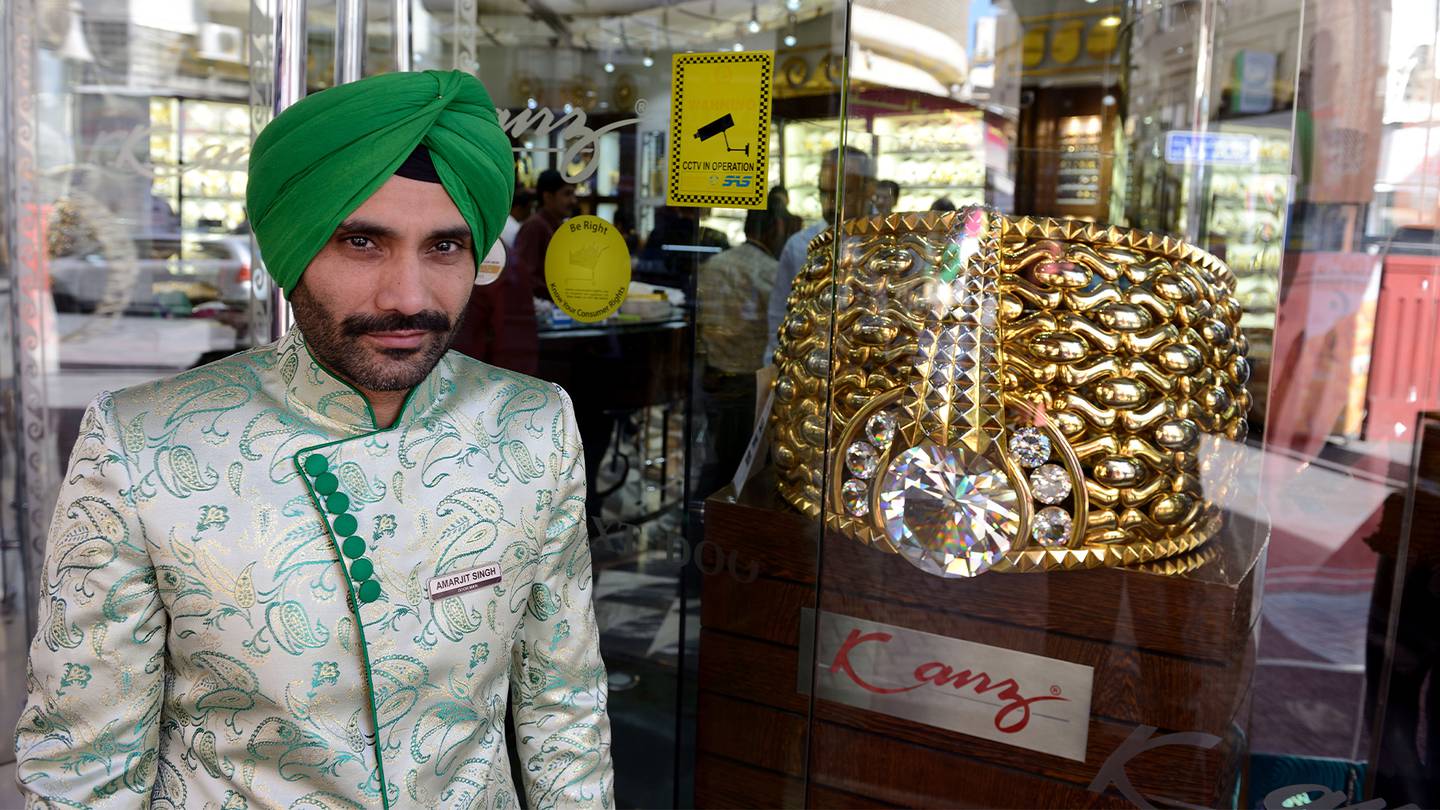
Jewellery remains a strong link between India and the UAE today, influencing migration flows between the two countries.
As the largest export market for Indian gold jewellery, the UAE accounts for 80 percent of India’s plain gold jewellery exports and 20 percent of studded jewellery exports, according to reports revealed by The Economic Times. Conversely, the UAE is the second largest exporter of gold to India and, as the world’s biggest rough diamond hub, Dubai continues to leverage its strategic proximity and reliance with India, where 90 percent of the world’s diamonds are polished.
One look at the Board of Directors of Dubai Gold and Jewellery Group, the largest trade body for Dubai’s jewellery industry, confirms the authority of South Asians in the sector: with 11 out of 15 members being of Indian origin. They also hold local buying power.
Malabar Gold Group, a multi-billion-dollar Indian jewellery brand with the largest market share of Dubai’s 22 karat gold jewellery segment, attributes people from the Indian subcontinent, inclusive of Indians, Sri Lankans, Bangladeshis and Pakistanis, as being its biggest customers in the UAE.
“The traditional jewellery business in Dubai was predominantly of 22 karat gold and the majority of the stores in the gold souk were focused on selling pure gold jewellery, primarily to customers from the Indian subcontinent, but also from the Arab world,” explained Amit Dhamani, CEO of Dhamani Jewels and Joint Secretary of Dubai Gold and Jewellery Group.
The Evolving Luxury Landscape
Beyond those working in the jewellery sector, Dubai is home to several prominent industry figures of South Asian heritage in luxury fashion. Working in PR, marketing and media, some were born in Europe or North America within second or third-generation families. Others have emigrated directly from the subcontinent.
Indian-born Dipesh Depala, managing partner of Dubai-based luxury communications agency The Qode, is the operational partner of global PR firms Karla Otto and K2 in the Middle East and North Africa. Other people of South Asian origin working to shape fashion brand conversations alongside those of European, Arab and other heritage in the city include Rani Ilmi, founder of Frame Publicity which represents Matchesfashion and JW Anderson, Shawn Stephens whose client roster at Stephen PR includes Missoni and luxury brand consultant Rosemin Madhavji of RR&Co.
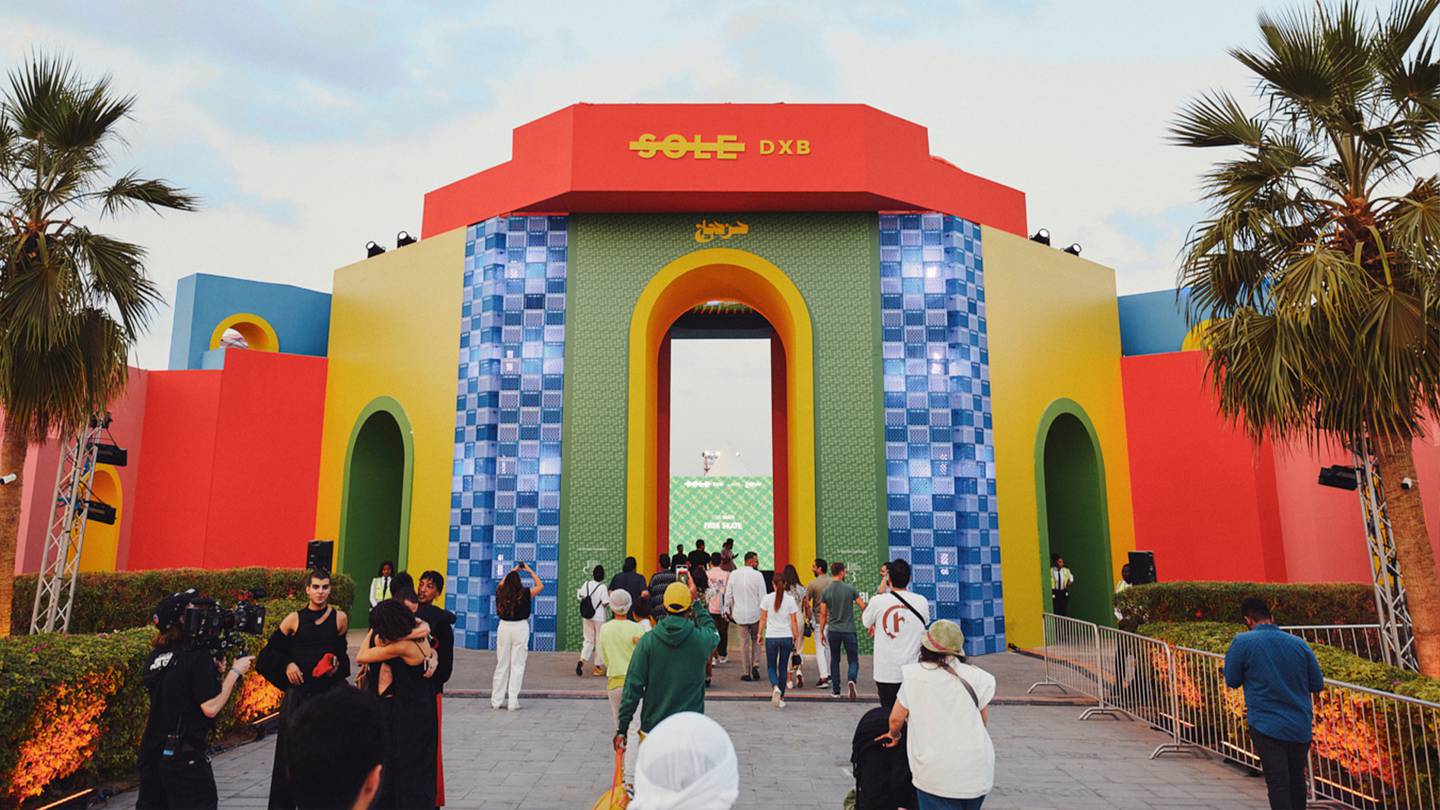
In the fashion events arena, South Asians such as American-born Rajat Malhotra and British-born Hussain Moloobhoy represent two-thirds of the founding team of Sole DXB alongside partner Joshua Cox. The Dubai-based streetwear and culture festival attracts tens of thousands of the region’s most devout sneakerheads each year.
In the C-suite, Indian origin executives like Samara Punjabi, CEO of Manolo Blahnik Middle East, Shashi Menon, founder and CEO of Nervora, the media company behind Vogue Arabia, and Kunal Kapoor, founder and CEO of pre-owned luxury platform Luxury Closet, are well-known in the Dubai industry.
Alongside other nationalities, South Asians also play key roles in upper and middle management at many fashion companies across logistics, operations, procurement and finance. But despite the influence and affluence of some South Asians in the UAE, two areas of the luxury industry where their perspective remains underrepresented are media and frontline retail.
Home to the regional headquarters of leading global publications and luxury brands, the UAE’s luxury fashion industry almost exclusively speaks to the Arab and Western expat consumer, in part because those media are almost exclusively staffed by Western and Arab expats. South Asian origin fashion editors are a rarity apart from those working for international publications such as Ritu Upadhyay, Middle East bureau chief for WWD and Sujata Assomull, contributing editor for Vogue India.
Retail sales is another area where representation appears to fall short. Interestingly South Asians, alongside Filipinos, are prevalent across the shop floors of affordable to mid-priced retail segments, but when it comes to luxury retail, their visibility is markedly reduced.
The result is that South Asian luxury customers aren’t usually afforded the same consideration as their Russian and Chinese counterparts in Dubai where store assistants either speak the latter’s native languages or have familiarity with those markets. “I have always wondered why [luxury] brands and retailers overlook such a huge part of the population,” said Depala.
Looking Ahead
A hub for global business located just a few hours from both India and Pakistan, Dubai provides a neutral place for consumers and industry figures looking to bypass the diplomatic red tape that limits travel and trade between the two countries.
Bound by close cultural ties, Dubai offers designers from the Indian subcontinent an unprecedented opportunity for growth but surprisingly, the high-end South Asian traditional wear segment is one that remains drastically underdeveloped in the UAE.
Although South Asian designers such as Sabyasachi Mukherjee, Tarun Tahiliani, Hassan Sheheryar Yasin and Sania Maskatiya maintain a presence in the city through fashion shows, multi-brand retailers, trunk shows and exhibitions, Pakistani couturier Faraz Manan is one of only a few with a flagship boutique in Dubai, a strategy that has enabled him to amass a sizeable Indian clientele, including Bollywood’s elite. Indian designer Manish Malhotra has recently announced that he is set to reinstate his retail presence in the UAE with a brand-new flagship store at the Dubai Mall set to open in mid-2023.
The relationship between South Asian fashion designers and the UAE market could deepen further under a newly launched national strategy which aims to boost the contribution of the local cultural and creative industries to 5 percent of the national GDP by 2031. One likely outcome of the policies related to this drive will be that it will be easier for international creatives to relocate to and set up businesses within the UAE.
The signing of the milestone Comprehensive Economic Partnership Agreement (CEPA) between India and the United Arab Emirates in February 2022, could also play a role through the possible alleviation of import duties on textile, leather, footwear, gems, and jewellery trade.
Cross-border commerce through political will notwithstanding, it is the cross-cultural connections that some industry figures suggest are just as important to keep the fashion industry relationship strong.
“The DNA of the UAE is very inclusive, an attribute that has consistently complemented and accepted the contribution of South Asians throughout its history,” said Dhamani. “Emiratis have always been very appreciative of the culture of the Indian subcontinent…[and] they understand our nuances.”

